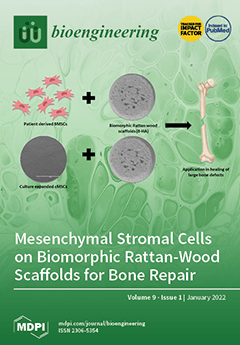Open AccessArticle
Unraveling the Mechanism of Platelet Aggregation Suppression by Monoterpenoids
by
Liliya E. Nikitina, Roman S. Pavelyev, Ilmir R. Gilfanov, Sergei V. Kiselev, Zulfiya R. Azizova, Alexander A. Ksenofontov, Pavel S. Bocharov, Elena V. Antina, Vladimir V. Klochkov, Ayzira F. Timerova, Ilfat Z. Rakhmatullin, Olga V. Ostolopovskaya, Mohammed A. Khelkhal, Sergei V. Boichuk, Aigul R. Galembikova, Natalia S. Andriutsa, Larisa L. Frolova, Alexander V. Kutchin and Airat R. Kayumov
Cited by 6 | Viewed by 3731
Abstract
Platelet aggregation causes various diseases and therefore challenges the development of novel antiaggregatory drugs. In this study, we report the possible mechanism of platelet aggregation suppression by newly synthesized myrtenol-derived monoterpenoids carrying different heteroatoms (sulphur, oxygen, or nitrogen). Despite all tested compounds suppressed
[...] Read more.
Platelet aggregation causes various diseases and therefore challenges the development of novel antiaggregatory drugs. In this study, we report the possible mechanism of platelet aggregation suppression by newly synthesized myrtenol-derived monoterpenoids carrying different heteroatoms (sulphur, oxygen, or nitrogen). Despite all tested compounds suppressed the platelet aggregation in vitro, the most significant effect was observed for the S-containing compounds. The molecular docking confirmed the putative interaction of all tested compounds with the platelet’s P2Y
12 receptor suggesting that the anti-aggregation properties of monoterpenoids are implemented by blocking the P2Y
12 function. The calculated binding force depended on heteroatom in monoterpenoids and significantly decreased with the exchanging of the sulphur atom with oxygen or nitrogen. On the other hand, in NMR studies on dodecyl phosphocholine (DPC) as a membrane model, only S-containing compound was found to be bound with DPC micelles surface. Meanwhile, no stable complexes between DPC micelles with either O- or N-containing compounds were observed. The binding of S-containing compound with cellular membrane reinforces the mechanical properties of the latter, thereby preventing its destabilization and subsequent clot formation on the phospholipid surface. Taken together, our data demonstrate that S-containing myrtenol-derived monoterpenoid suppresses the platelet aggregation in vitro via both membrane stabilization and blocking the P2Y
12 receptor and, thus, appears as a promising agent for hemostasis control.
Full article
►▼
Show Figures






